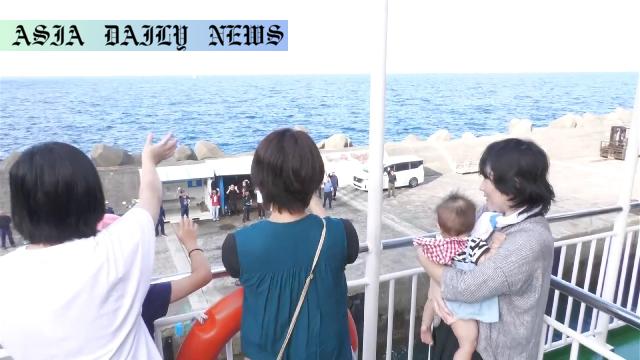Evacuation: Residents flee southwestern Japan’s islands due to intense seismic activity and strong tremors.

Residents Evacuate Due to High Seismic Activity
The serene and remote southwestern islands of Japan have faced an upheaval as high seismic activity continues to plague the area. Akusekijima and Kodakarajima, part of the Tokara island chain, have seen a departure of waves of residents after consecutive earthquakes heightened fears among the local population. On Saturday, a powerful tremor shook Akusekijima, measuring an upper 5 on Japan’s seismic intensity scale of zero to 7. This followed an earlier quake of lower 6 intensity that hit just a day before.
In response, a second group of 46 residents boarded a village-operated ferry on Sunday morning to evacuate to Kagoshima, a city located on mainland Kyushu. Earlier on Friday, a smaller group of 13 residents, ranging in age from infants to elders, had also left following the initial quake. This escalating evacuation effort reflects growing anxiety among the residents, fueled by the reality of over 1,400 tremors registering levels of 1 or higher in the region since June 21.
Local Efforts to Address Concerns Amid Crisis
Kubo Genichiro, the mayor of the village overseeing Akusekijima and Kodakarajima, has assured the residents that every effort will be made to mitigate their fears. Organizing swift evacuations and arranging safe passage to mainland cities has become central to these efforts. While many wished to leave the islands due to the strong quakes, others remained behind, weighing their options carefully as seismic activity makes the situation unpredictable.
These islands, known for their relatively sparse population and pristine beauty, have now become a focal point of a natural disaster. Local officials have facilitated transportation using the village’s own ferry vessels, ensuring a secure evacuation channel amidst ongoing tremors. The situation underscores the challenges of providing relief and instilling confidence in affected communities, even as nature remains indifferent to human endeavors.
Historical and Future Implications of Seismic Activity
The Tokara island chain has long been recognized as seismically active, yet this recent surge in earthquakes is testing both the island infrastructure and residents’ resilience. The very geography that makes these islands susceptible to seismic upheavals also provides them with their natural beauty and isolation, which now seem overshadowed by the constant threat of quakes.
This situation also raises broader questions about disaster preparedness in remote and rural areas. The logistical challenges in reaching these islands, coupled with limited resources, highlight the importance of preemptive planning and rapid response mechanisms. Moving forward, officials may need to reassess the safety protocols and evacuation strategies for small island communities, which are often vulnerable to such natural phenomena.
Commentary
Impact on Local Communities
The evacuation from Akusekijima and Kodakarajima emphasizes the profound impact that natural disasters can have on tight-knit communities. These islands are home to residents who have cherished their remote and peaceful way of life, only to find themselves uprooted by the ongoing tremors. While safety remains the top priority, the emotional toll on individuals who must leave their homes behind cannot be overstated. Such evacuations often disrupt lives, severing ties to both livelihoods and cultural heritage.
The Role of Authorities in Crisis Management
It is commendable how local governments and officials have quickly mobilized resources to facilitate safe evacuations. The use of village-operated ferries demonstrates a proactive approach, showcasing how even limited resources can be maximized in times of crisis. Mayor Kubo Genichiro’s assurance of making every effort to address the residents’ anxieties sends a clear message of solidarity and leadership. However, the incident underlines the pressing need for long-term strategies to address seismic risks, particularly for communities in high-risk zones.
Learning from Natural Disasters
This ongoing crisis serves as a stark reminder of the unpredictability of nature and the importance of readiness. The residents and authorities of these islands are now tasked with not only managing the current situation but also planning for potential future events. Building resilient infrastructure, enhancing communication channels, and implementing early warning systems will be essential steps in ensuring the safety and security of such vulnerable populations.
Ultimately, the evacuation reflects both the resilience of human communities in the face of adversity and the importance of collective action in overcoming challenges posed by nature. What remains to be seen is how quickly these communities can recover and adapt, and what measures can be implemented to mitigate similar hardships moving forward.


